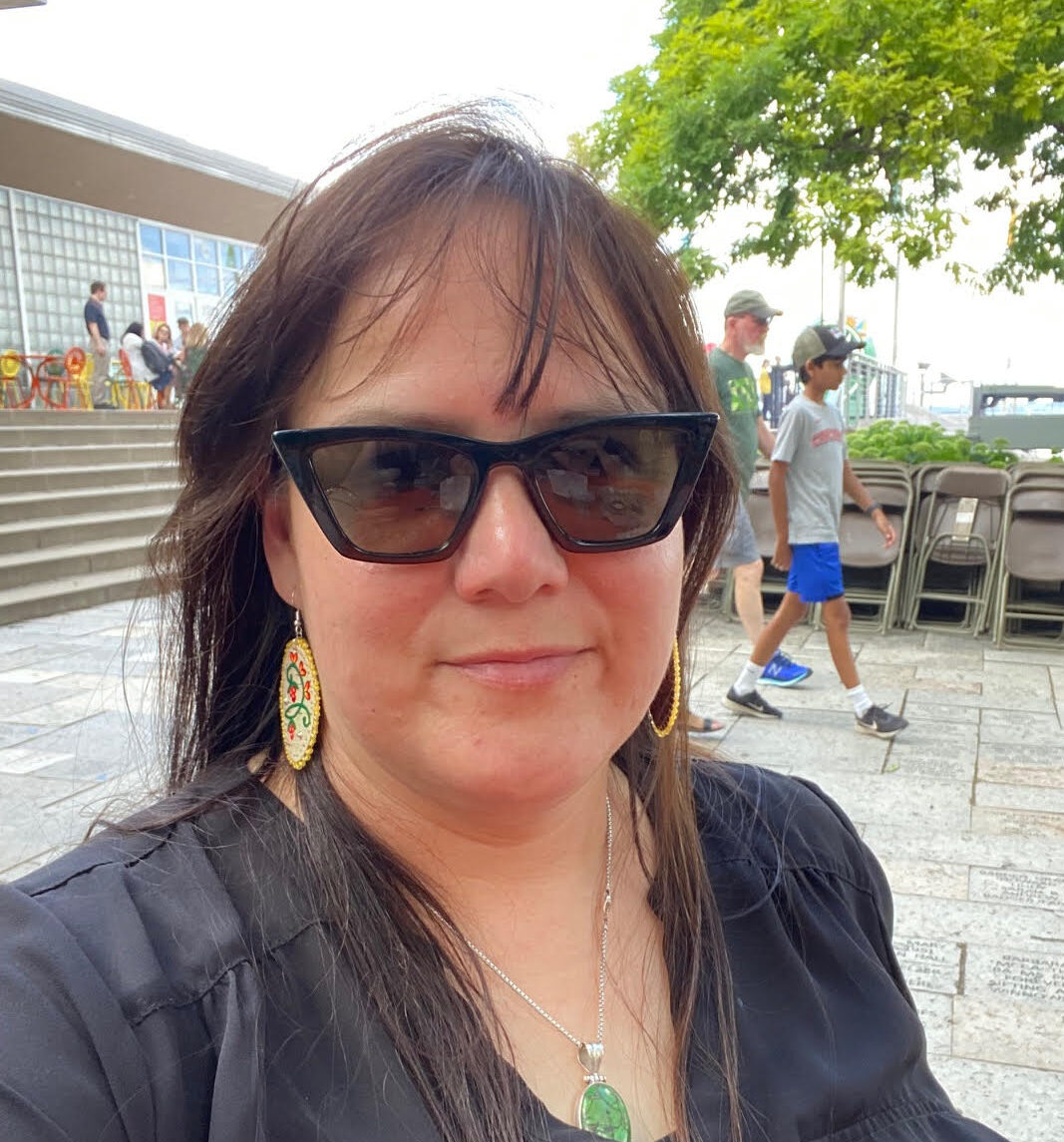Language is the center-point of any culture. For Indigenous people, keeping and carrying forward their language becomes a decolonial act — a reclamation of space.
This has been Laura C. Red Eagle’s journey. A writer and language enthusiast, Red Eagle is a member of the Ho-Chunk Nation, whose traditional territories include land in Wisconsin, Minnesota, Iowa, and Illinois.
LAURA RED EAGLE“Learning the language in a judgment-free zone opens doors into learning about history, the ways of thinking, and being, and what is important, and so much more.”

Red Eagle grew up in rural Wisconsin with her non-native mother, away from her Ho-chunk communities in the area. During this time, she had trouble navigating her identity, culture, and community. Her father’s family were fluent Ho-chunk speakers, but they spoke to her in English when they shared space. In high school, Red Eagle decided to start learning her traditional language. She joined a language camp offered by the Ho-chunk community in Black River Falls. This lit the fire to her language-learning journey.
Over the years, she noticed a deep yearning to create community around language learning. Post-secondary education didn’t offer what she was hoping for. Determined, she decided to gather her own resources.
These resources were few and far between — common for many Indigenous languages. As oral languages, resources weren’t created until colonial contact. Made by non-speakers, non-native individuals and organizations, complications arose around the control of translations and learning methods, and access to these materials.
A Space to Share
Red Eagle tracked down a tape that offered Ho-chunk for colors, numbers, and animals, but she craved to dive deeper.
Then, a timely interaction set the stage for her next chapter of language-learning. At her father’s funeral, she heard Jon Greendeer (current president of Ho-Chunk Nation) speak in Ho-Chunk. After a conversation, he offered resources and other community members to connect with around the language. The importance of community learning spaces kept surfacing for Red Eagle.
“Learning the language in a judgment-free zone opens doors into learning about history, the ways of thinking, and being, and what is important, and so much more,” she says.
Her perseverance led to the Indigenous Language Table at the Wisconsin Institute for Discovery (WID) in Madison. It’s a space for active language practice beyond the classroom. The Indigenous Language Table is a communal gathering that meets once a week. It emphasizes the importance of using the language in everyday conversations.
To young Indigenous people and new language learners, Red Eagle says: find a class, build a community, and create spaces for language use.
Red Eagle remains steadfast in creating a supportive community for language learners, even with the struggles of language revitalization work. “Language is ultimately about connecting as human beings and creating a sense of belonging,” she says. She envisions more Indigenous Language Tables across Wisconsin and beyond. Her story is a testament to the resilience and dedication required to revive and sustain Indigenous languages. Her efforts with the Indigenous Language Table offer a blueprint for creating vibrant language communities.
